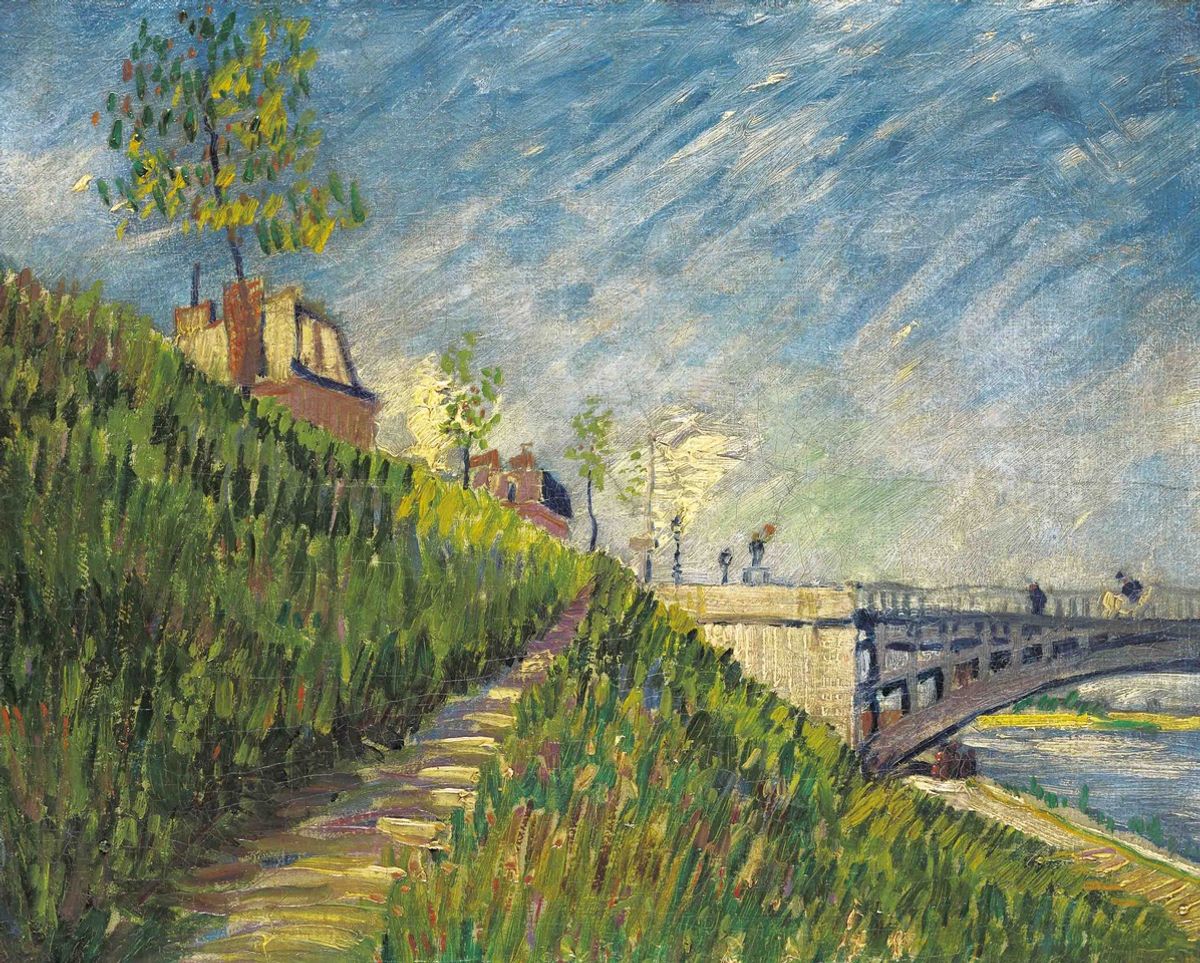Van Gogh along the Seine, which opens at Amsterdam’s Van Gogh Museum, juxtaposes Vincent’s work with that of four of his Parisian contemporaries (until 14 January 2024). Painting by the river banks, they audaciously experimented with colour and technique.
The Seine exhibition was presented earlier at the Art Institute of Chicago, under a slightly different title, Van Gogh and the Avant-Garde: The Modern Landscape. Closing last month, it attracted 258,000 visitors.
The show highlights Van Gogh’s landscapes alongside those by four of his avant-garde colleagues: Georges Seurat, Paul Signac, Emile Bernard and Charles Angrand. In Amsterdam, it included 21 Van Gogh paintings, with five of them being rarely exhibited works from private collectors. There were nearly slightly more private works: Larry Ellison, founder of the Oracle computer software company, originally offered to lend two pictures, but they were not sent to the Amsterdam show.

Two views of the same motif: a postcard (around 1905) of the middle arch of the Pont de Clichy and Van Gogh’s River Bank at Springtime (May-July 1887)
Credit: Dallas Museum of Art (Van Gogh)
During Van Gogh’s three month “campaign” in the suburbs around Asnières he completed about 40 paintings, so half have been reassembled. Borrowing valuable Van Gogh works is always a challenge, so this represents a considerable achievement.
A highlight of the exhibition is the opportunity to see most of three triptychs—sets of paintings which the the artist intended to be displayed as trios. The three triptychs depict views of the Seine in the north-west outskirts of Paris: at Clichy (the industrial side nearest Paris), Asnières (the suburban far side) and the verdant island between them, La Grande Jatte.
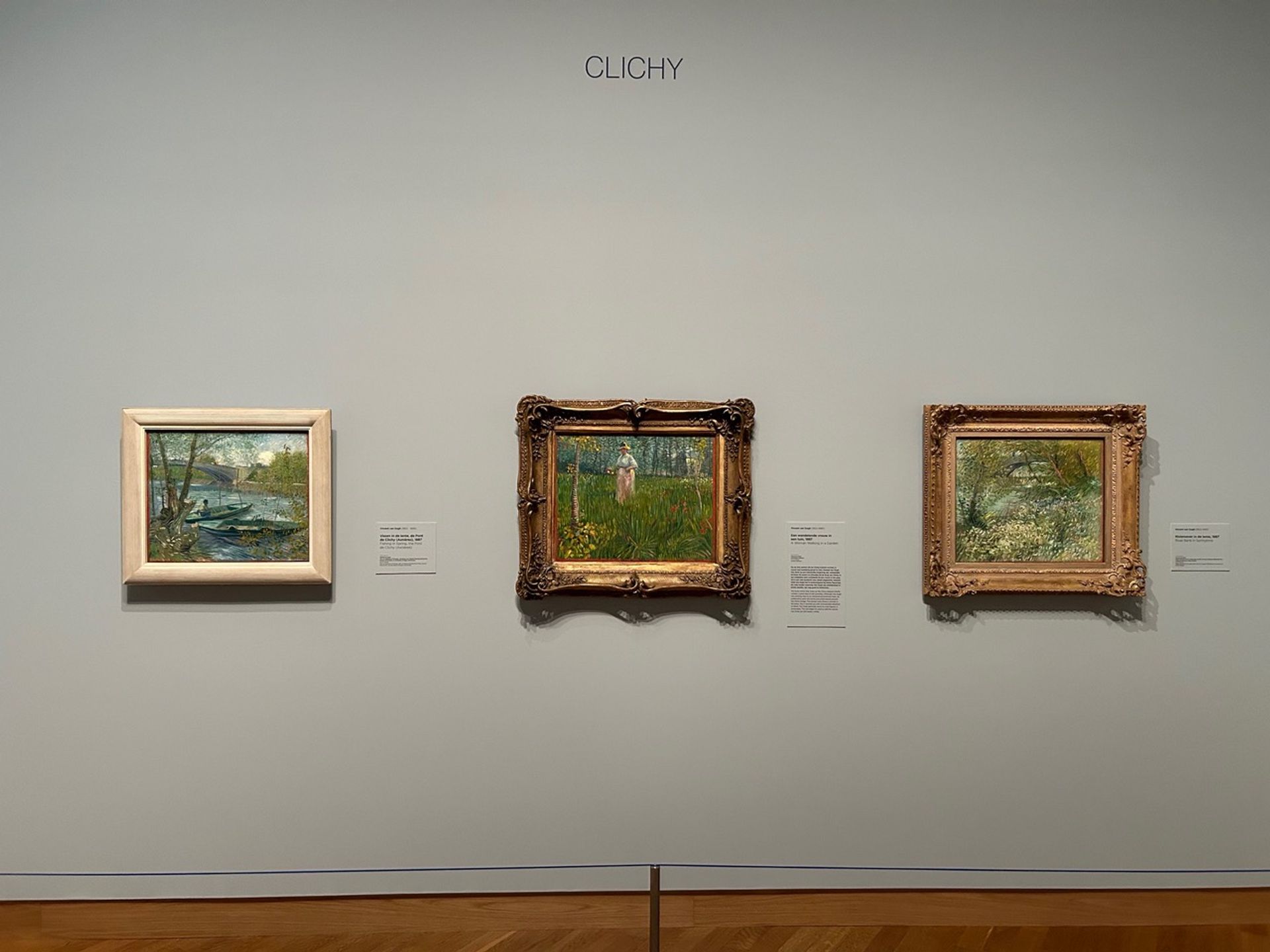
The Clichy triptych: Van Gogh’s Fishing in Spring, the Pont de Clichy (Asnières), A Woman Walking in a Garden and River Bank in Springtime (all May-July 1887)
Credits (respectively): Art Institute of Chicago; private collection; and Dallas Museum of Art (photograph: The Art Newspaper)
The nine paintings are now scattered around the world, with five in various museums and four in separate private collections. None are at the Van Gogh Museum, so it was quite a task to successfully reassemble seven of the nine for the Amsterdam exhibition.
Seeing the reconstructed triptychs hanging in the exhibition makes one realise quite what a difference frames make. In the Clichy triptych, the Art Institute of Chicago’s simple frame represents a strong contrast with the ornate gilded surround on the loan from a private collection. Van Gogh himself favoured plain wooden frames.
The triptych paintings are unusual because Van Gogh included red borders around the edges of each. These lines are now mainly hidden by their frames, although in a few cases they are visible.
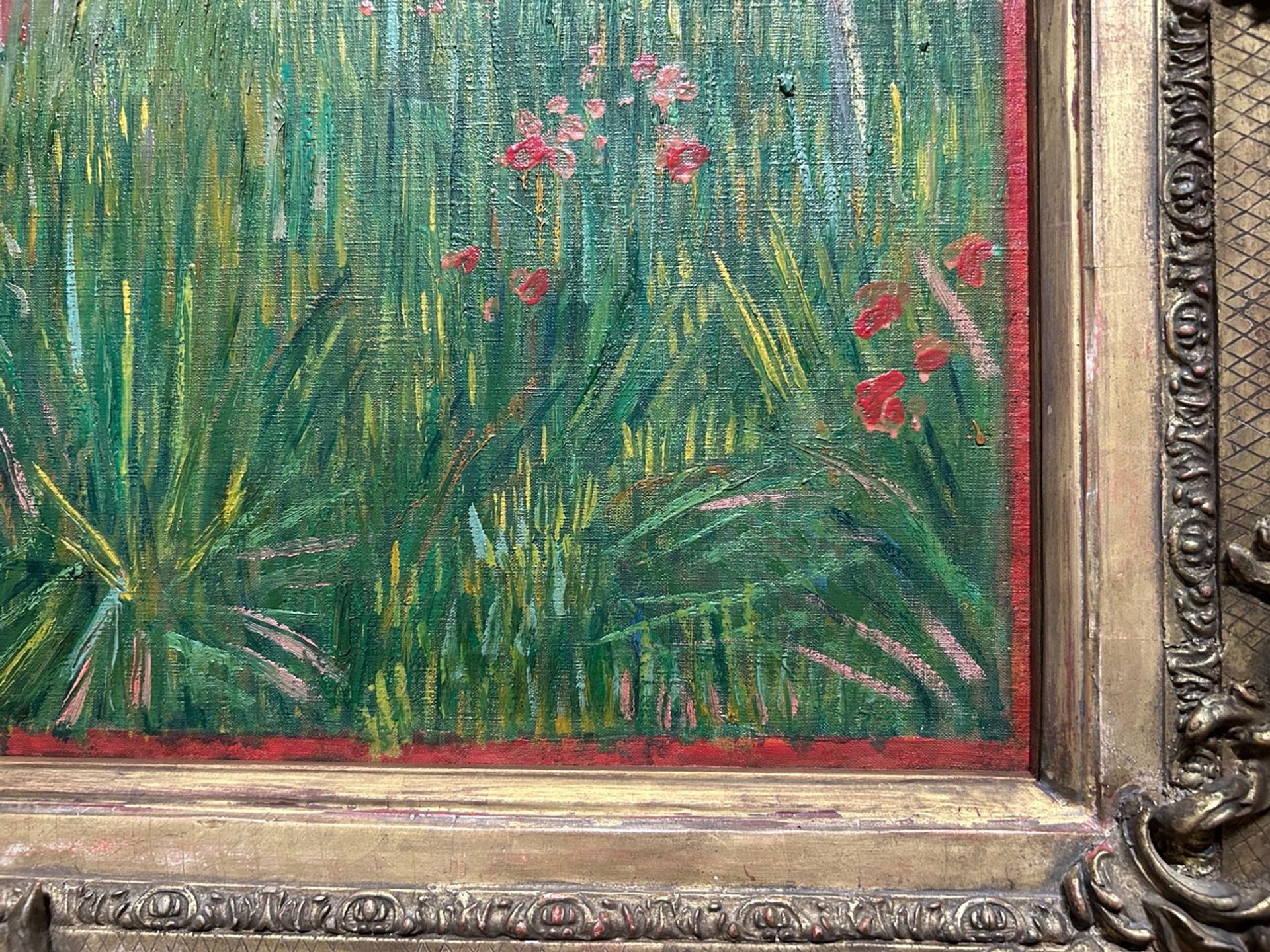
The red border on Van Gogh’s A Woman Walking in a Garden (May-July 1887) (detail)
Credit: private collection
The show offers a unique chance to compare Van Gogh’s work with that of his four colleagues. For instance, in 1885 Signac had depicted the same laundry boat that Van Gogh would paint two years later, employing his typical thick impasto paint. All five artists painted in the area around Asnières at various times between 1883 and 1889, in most cases working independently.
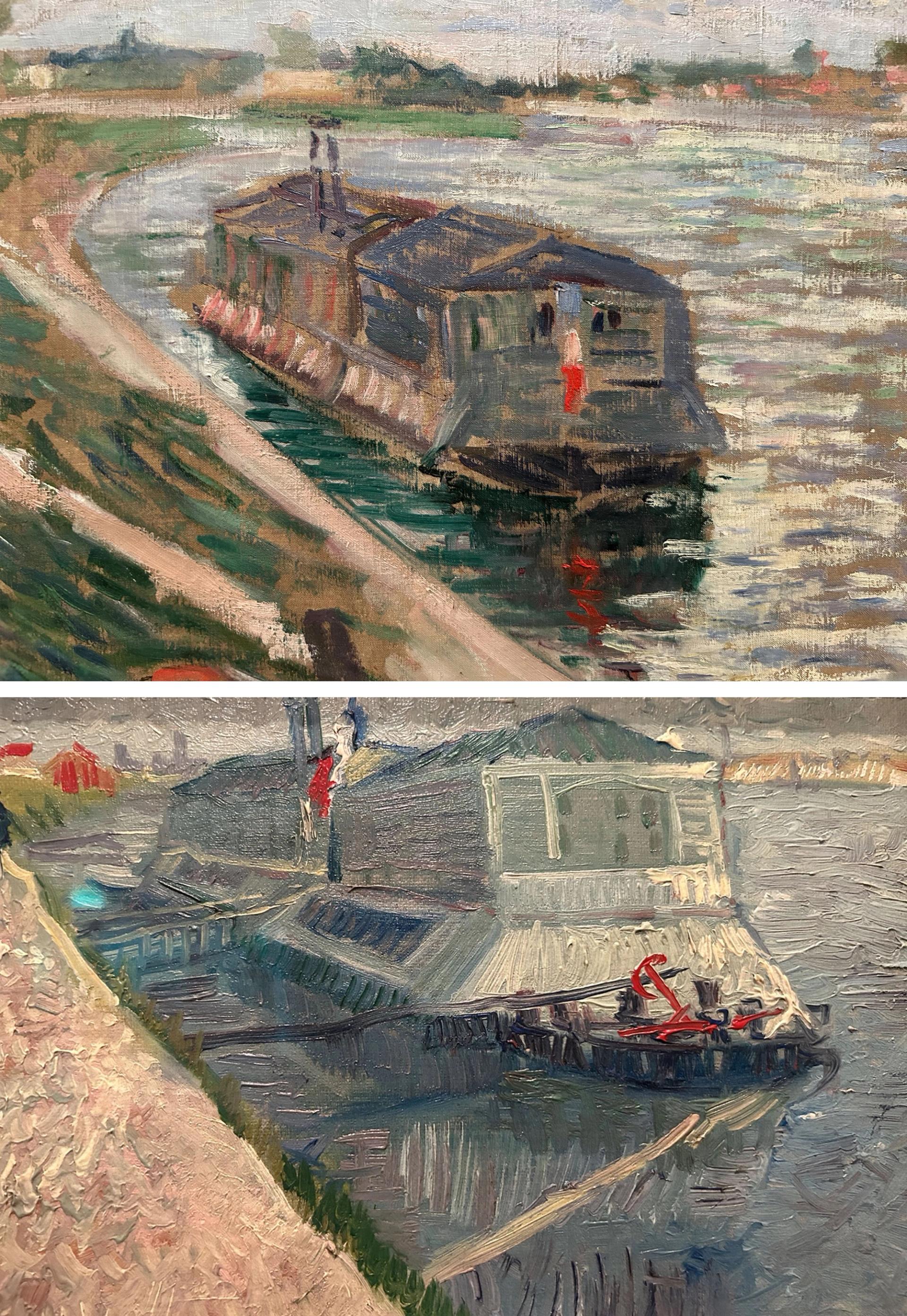
Paul Signac’s Quai de Saint-Ouen (1885) (detail) and Van Gogh’s The Laundry Boat on the Seine at Asnières (May-July 1887)
Credits: private collection and Virginia Museum of Fine Arts, Richmond, Virginia
An especially intriguing drawing in the show is Van Gogh’s Sailing Boat on the Seine at Asnières. The artist’s added colour notations (for instance, “violet” for the shadow of the vessel), so it must have been drawn as a preparatory sketch for an oil painting. Although Van Gogh may never have painted this composition, it is equally possible that it was completed, but lost. Will the painting ever turn up, perhaps previously unrecognised as a Van Gogh?
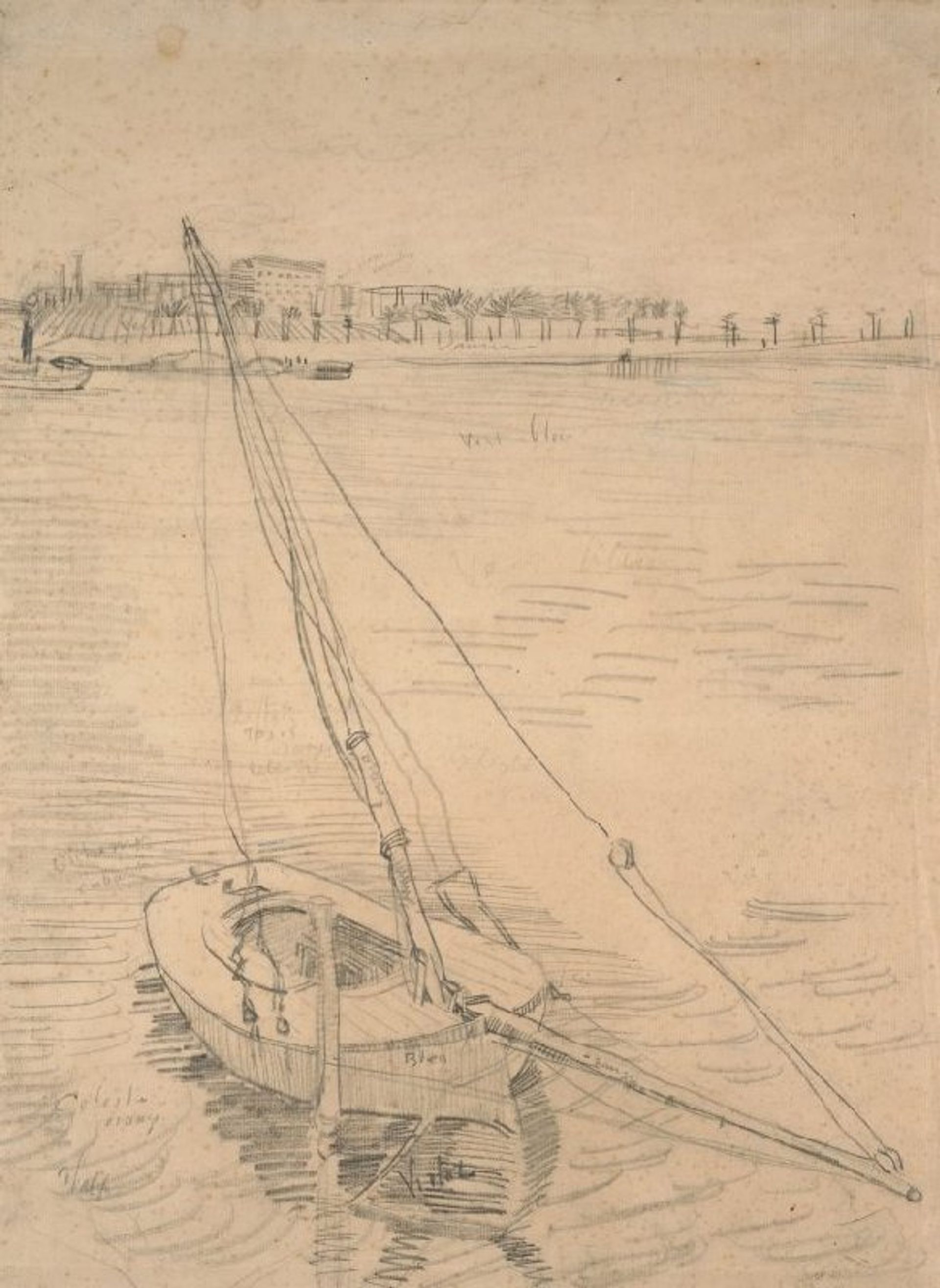
Van Gogh’s Sailing Boat on the Seine at Asnières (May-July 1887)
Credit: Van Gogh Museum, Amsterdam (Vincent van Gogh Foundation)
Van Gogh’s spring campaign on the banks of the Seine undoubtedly pushed his art to greater heights. As Vincent wrote to his sister Wil in October 1887: “When I painted landscape in Asnières this summer I saw more colour in it than before.” He then added that “it’s my plan to go to the south for a while, as soon as I can, where there’s even more colour and even more sun”. Four months later he set off to Provence—where he painted in exuberant colours.
As Bregje Gerritse, the Amsterdam curator of the show, explains, it was on the banks of the Seine that Van Gogh took “decisive steps toward the colourful, loose style that he would develop in the south of France”.
Other Van Gogh news:
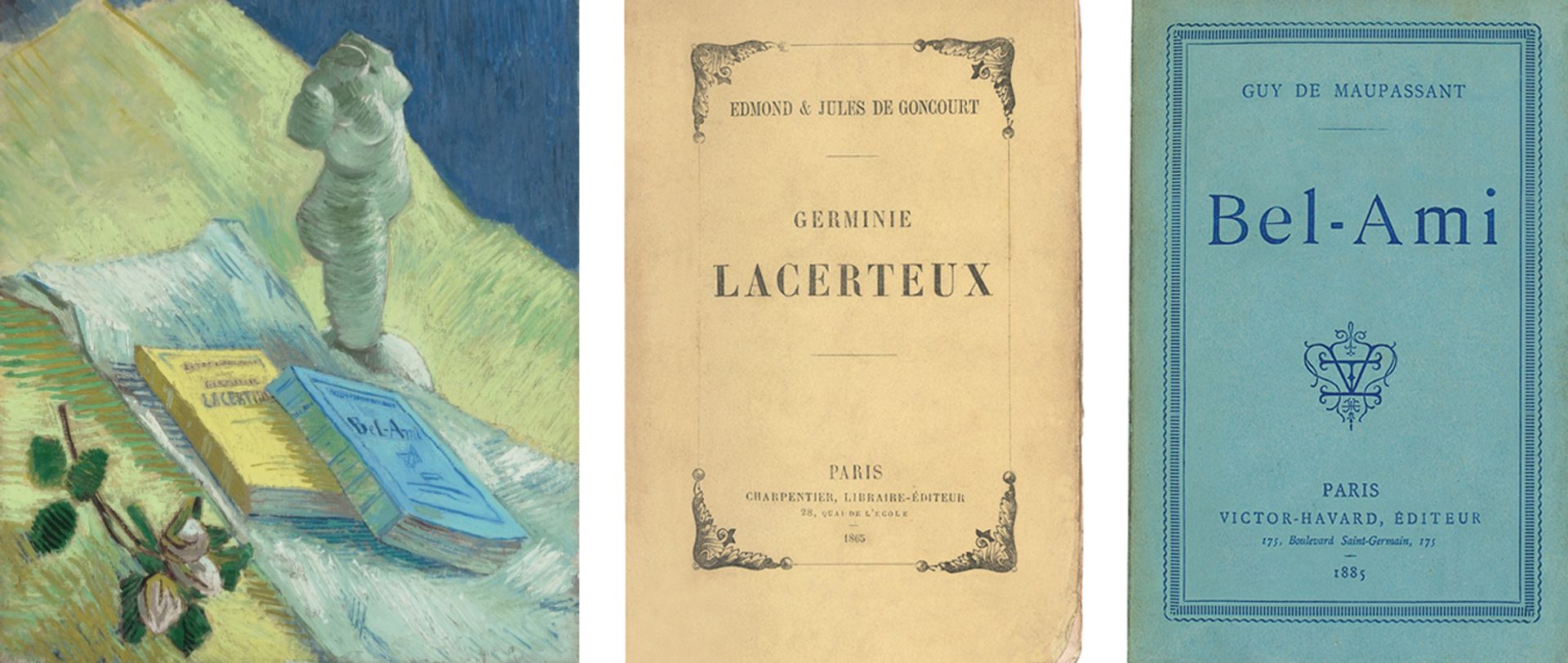
Van Gogh’s Still Life with Plaster Statuette (late 1887) with covers of Edmond & Jules de Goncourt’s Germinie Lacerteux (1865) and Guy de Maupassant’s Bel-Ami (1885)
Credit: Kröller-Müller Museum, Otterlo (Van Gogh)
A Van Gogh show has just opened in Milan. Vincent van Gogh: Artist and Reader, composed of loans from the Kröller-Müller Museum in Otterlo, is at the Museo delle Culture (Mudec) until 28 January 2024. There are 22 Van Gogh paintings and 13 works on paper, along with related works by other artists.
What is fresh is the focus on Van Gogh’s love of literature. Curated by Francesco Poli, the exhibition catalogue includes an essay by Van Gogh specialist Mariella Guzzoni on the painter’s literary tastes. In the exhibition, illustrations from books which he enjoyed are presented alongside drawings and paintings which they inspired. As this stimulating exhibition stresses, Van Gogh was a voracious reader.


